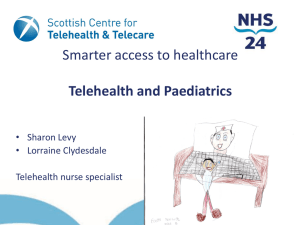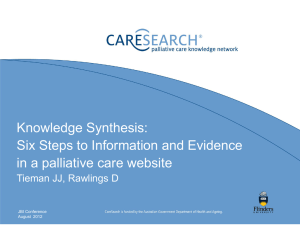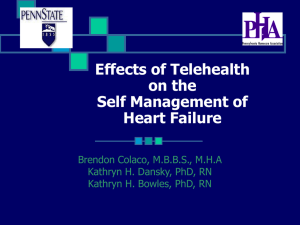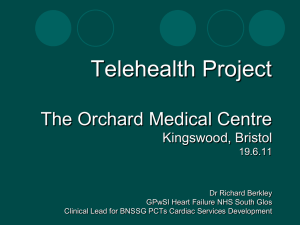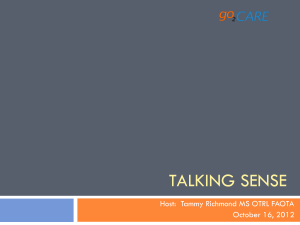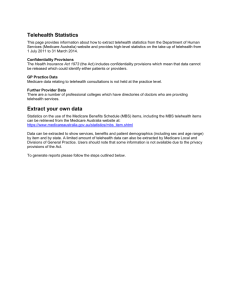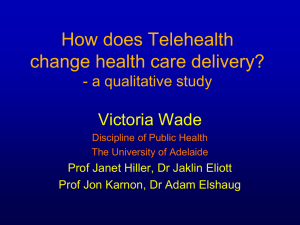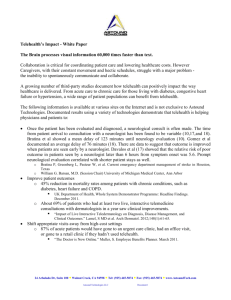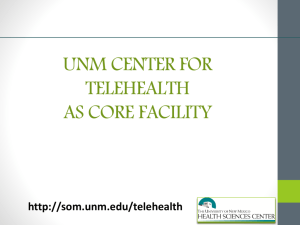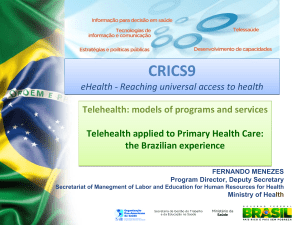New Technologies and Platforms (6.42MB ppt doc)
advertisement
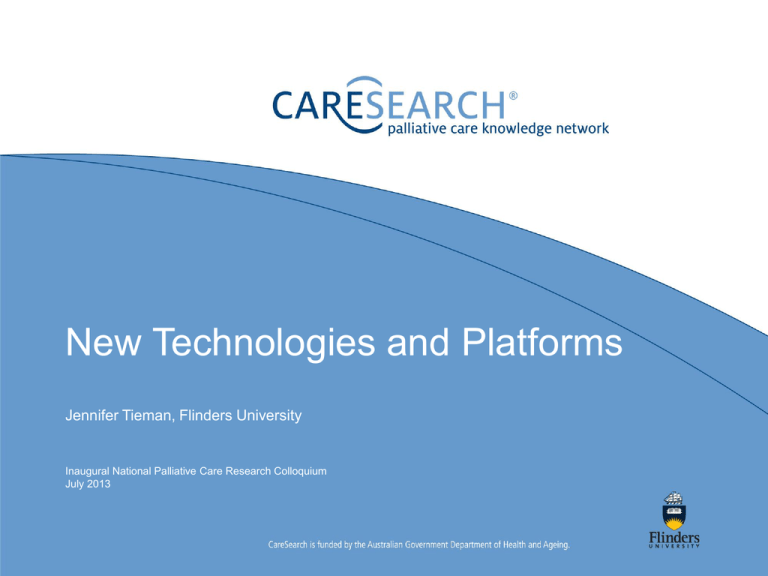
New Technologies and Platforms Jennifer Tieman, Flinders University Inaugural National Palliative Care Research Colloquium July 2013 Technology Context • More people using technology – Absolute numbers ↑, proportion of population ↑, participation by specific groups ↑, mobile technology ↑ – But still digital divides • More platforms, technologies, software – Dynamic environment – Consider gaming: Physical device(s) used, operating systems, application software, networking, and connectivity – But issues in integration, compatibility • More expectation of telehealth – Timely access, remote monitoring, telecommunications, patient empowerment, knowledge development, new service models, reducing error, managing demand Australian Context • National eHealth Strategy 2009 – Commonwealth-State MOU 2012-2014 • NHETA – Clinical documents including PCEHR, – eFoundations including standards, interoperability, security and access – National infrastructure including health identifiers and clinical terminology – Implementation activities (eg eHealth rollout sites) • National Digital Economy Strategy – Health and Ageing Goal • NBN • MBS Online - Telehealth PC and Telehealth • Cradle Coast Electronic Health Information Exchange • Advance Care Directives and PCEHR • NBN Telehealth Pilots Program (Aged, Cancer, Palliative Care) • CareSearch, COMPAC modules, PCOC, Hammondcare Dementia, • NHMRC – Internet &Telemedicine 2010-2012 Implications • Significant driver in health system with hopes about demand, supply and delivery benefits • Telehealth foundations are being built Telehealth in the Home: Palliative Care, Aged Care and Clinical Rehabilitation in SA Funded by the Australian Government under the National Broadband Network (NBN) Enabled Telehealth Pilots Program’ Project Partners: Flinders University South Australian Local Health Network Southern GP groups, ACH Three clinical streams • Palliative care: Integration of online tools, remote monitoring, information and resources and regular online communication to support home-based patients and their carers. • Aged: Video conferencing to support clinical care in RACF. • Rehabilitation in the elderly: Introduction of e-rehab including online tools, information provision and communication to support home-based rehabilitation services for the elderly, including people recovering from stroke or fractures. Palliative Care Study • Palliative Care (Telehealth Research Group) – Kate Swetenham (SAPS), Tim To (SAPS), Jennifer Tieman (CareSearch), David Currow (DPSS), Deidre Morgan (DPSS) • Structured online face to face: patient-nurse; carer-network facilitator • Patient online self-assessments: SAS, AKPS, AQoL, FitBit • Carer online self-assessment: SAPS tool • Virtual case conference Outcomes of interest • Telehealth feasibility • Patient, carer, professional engagement • Service delivery changes • Clinical metrics • Cost elements Where are we up to? • Ethics submitted • Protocol – Clinical algorithms, Patient consent processes, Data collection processes, Analysis requirements, • IT resources and apps developed (and refined) • Technology architecture mapped • Negotiations, agreements with providers and with partners • QA test with patient volunteers • Documentation processes underway Technology: Research Agenda • PC as a test bed – Across the health system – Community intersect – Cross over into high priority health areas • Policy implications of telehealth research • Align with clinical needs – Health at the heart of telehealth • Role of big data Research Issues • Undertaking research not just projects – Funding is often project based • Complex interventions – Appropriate study designs? – Articulating and measuring outcomes? • Telehealth requires specification of current practice • Access to the technology • Research teams – Multidisciplinary (outside of health professionals) – Working knowledge of the technical base needed – Understanding each other • How to build a starting point? CareSearch would like to thank the many people who contribute their time and expertise to the project including members of the National Advisory Group and the Knowledge Network Management Group. CareSearch is funded by the Australian Government Department of Health and Ageing. www.caresearch.com.au
